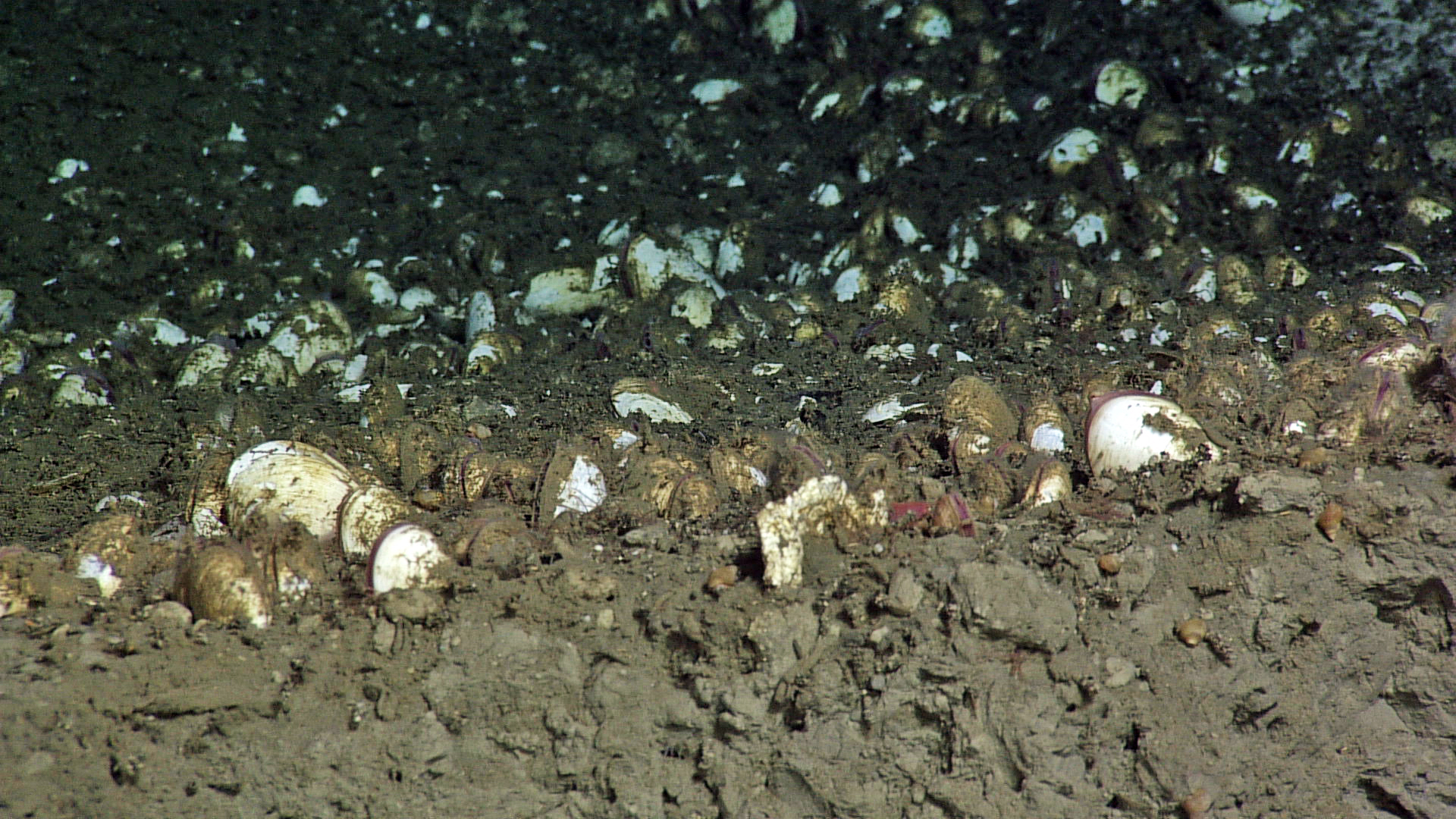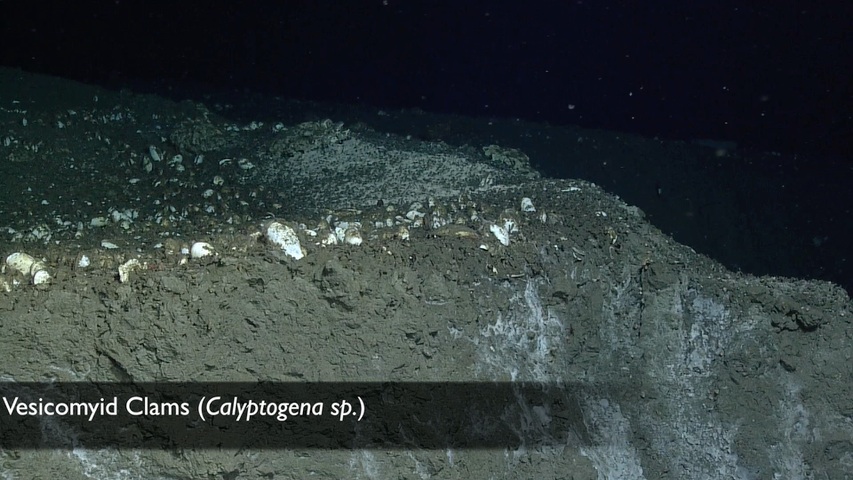Vesicomyid Clam (Calyptogena sp.)

These clams thrive in hydrogen sulfide rich environments, like the methane seep at Einstein’s Grotto at Southern Hydrate Ridge. They have a special feature, a protein that binds with the sulfide from the water and prevents it from actually entering the clam’s tissues, while also allowing the sulfide to reach symbiotic, chemosynthetic bacteria in their gills that provide the clam with energy. It also has a very extendable foot that is used to search for sulfide rich sediment. They usually have white shells and are typically partially buried beneath the sediment. Vesicomyid clams typically form clam beds on the outskirts of the microbial mats at Southern Hydrate Ridge, around 770 m deep.
References:
https://academic.oup.com/mollus/article/72/4/359/2883183/Recent-bivalve-molluscs-of-the-genus-Calyptogena
www.mbari.org/benthic/Physiologicaladaptationsofclams.html

















